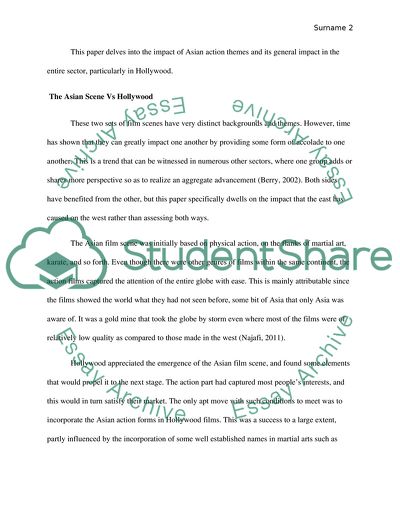Cite this document
(Asian Action Cinema and Hollywood Report Example | Topics and Well Written Essays - 2000 words, n.d.)
Asian Action Cinema and Hollywood Report Example | Topics and Well Written Essays - 2000 words. https://studentshare.org/visual-arts-film-studies/1798460-asian-action-cinema-and-hollywood
Asian Action Cinema and Hollywood Report Example | Topics and Well Written Essays - 2000 words. https://studentshare.org/visual-arts-film-studies/1798460-asian-action-cinema-and-hollywood
(Asian Action Cinema and Hollywood Report Example | Topics and Well Written Essays - 2000 Words)
Asian Action Cinema and Hollywood Report Example | Topics and Well Written Essays - 2000 Words. https://studentshare.org/visual-arts-film-studies/1798460-asian-action-cinema-and-hollywood.
Asian Action Cinema and Hollywood Report Example | Topics and Well Written Essays - 2000 Words. https://studentshare.org/visual-arts-film-studies/1798460-asian-action-cinema-and-hollywood.
“Asian Action Cinema and Hollywood Report Example | Topics and Well Written Essays - 2000 Words”. https://studentshare.org/visual-arts-film-studies/1798460-asian-action-cinema-and-hollywood.


